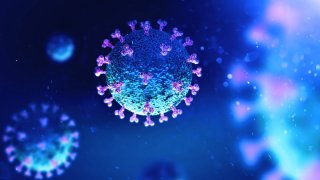
On Thursday Gov. Newsroom officially announced California would be shifting toward an endemic phase, after two years of strict COVID-19 protocols statewide.
The governor announced the new S.M.A.R.T.E.R. plan which is the state's latest pandemic response. He unveiled this plan acknowledging that there would likely be surges later in the year and that every variant will come with different obstacles.
Shots and vaccines will remain the biggest defense against hospitalizations and the state will continue to maintain capacity of administering "at least 200,000 vaccines per day on top of existing pharmacy and provider infrastructure."
Masks serve as a great way to slow the spread of the virus and provide good filtration which can lessen respiratory problems. The state will "maintain a stockpile of 75 million high quality masks and the capability to distribute them as needed."
Get top local stories in Southern California delivered to you every morning. Sign up for NBC LA's News Headlines newsletter.
Awareness is how people will remain up to date with information from health officials. Clear communication is key and the state will continue to provide information about vaccines, masks, and other pertinent facts to all 58 counties as well as continue to provide "support engagement with at least 150 community-based organizations."
Readiness is how the state plans to move into the new endemic phase. State health officials will continue wastewater surveillance throughout the state as well as enhancing respiratory surveillance within the health care system. California will also maintain its ability to "add 3,000 clinical staff within 2-3 weeks of need and across various health care facility types."
Testing will remain a vital part of measuring virus infection levels as well as making sure tests are being distributed. This new plan will allow the state to continue to perform at least 500,000 antigen and PCR tests per day.
Education will be a priority. In-person instruction in schools and having children safely attend will be a major part of the plan. The state will work to expand school-based vaccination sites by 25%.
Rx will allow evolving treatments to be increasingly accessible. Treatments will serve as a critical tool to help save lives across the state and California will maximize orders "for the most clinically effective therapeutic available" making sure they are ordered within 48 hours.
What is an endemic? How does it differ from a pandemic?
The World Health Organization officially declared the COVID-19 outbreak a global pandemic in March 2020. This meant that the virus was causing unpredictable waves of illness around the world.
A disease or pandemic is considered to be endemic when it begins to occur regularly in certain areas with established patterns. But health officers say that COVID-19 is far from being officially declared endemic.
How is California shifting toward an endemic?
California has become one of the first states in the country to begin to adopt endemic policies that include lifting their state-wide indoor mask mandate for vaccinated individuals. Children in school will still be required to wear their masks.
Health officials moved toward this decision as omicron cases began to fall in the state.
The state is also moving forward with lifting a negative test result requirement for people visiting nursing homes and hospitals.
In LA, city employees have been told that they no longer need to show proof of two test results per week and are now only required to show one test result per week.
It is the largest state economy to begin to implement endemic policies, and other states might follow California's lead. Gov. Newsom said that the state needs to learn to live with the virus.
What does this mean for unvaccinated individuals?
Unvaccinated individuals will still be required to wear masks in indoor settings.
What will happen if cases rise again and the state sees a surge?
State officials could reinstate mask mandates if cases begin to rise and there are drastic surges. State health officials said that they will be monitoring trends throughout the state and that surges in fall and winter are likely.
Will this affect testing and vaccines?
Testing and vaccines will still be available to residents, and those who are unvaccinated are encouraged to receive their doses of a vaccine or follow up with the booster dose.

